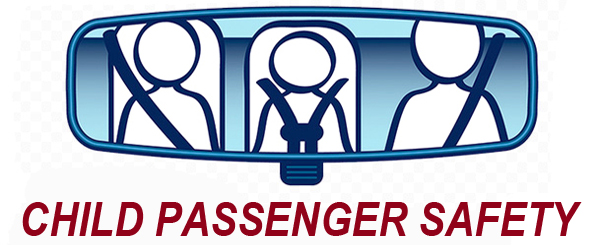Keeping children safe on the road means putting them in the right safety restraint at the right age.
That’s the message from the National Highway Traffic Safety Administration (NHTSA) and the Idaho Transportation Department (ITD) during National Child Passenger Safety Week Sept. 17–23. See Governor’s Proclamation.
Motor-vehicle traffic crashes are a leading killer of children, but properly used child-safety seats have been shown to reduce fatal injury by 71 percent for infants (under 1 year old) and by 54 percent for toddlers (1 to 4 years old).
“From 2011 to 2015, 12 children under the age of seven that were killed in Idaho passenger-vehicle crashes were unrestrained,” said Sherry Jenkins, with ITD’s Office of Highway Safety. “Those kids would likely have survived, or had a much better chance, had they been properly buckled up.”
Idaho has more than 260 certified child passenger safety technicians committed to educating parents and caregivers about the best ways to keep kids safe while traveling in cars, no matter how short or long the trip.
To help parents and caregivers in Idaho select the right car seats for their children, certified Child Passenger Safety Technicians will hold free car seat-check events. Call to make an appointment for any of the following events:
Wednesday, Sept. 20, 3 p.m. – 6 p.m., Walmart, 2470 Pullman Road, Moscow (no appointment necessary)
Friday, Sept. 22, 10 a.m. – 2 p.m., Nell Redfield-Oneida County Facility, 150 N. 300 W. 208 766-5368.
Saturday, Sept. 23, 10 a.m. – 1 p.m., Shoshone Medical Health and Wellness, 858 Commerce Drive, Smelterville, 208 625-4642.
Saturday, Sept. 23, 10 a.m. – 2 p.m., St. Luke’s Nampa Medical Center, 9850 W. St. Luke’s Drive, 208 870-3493
Motor-vehicle crashes are a leading killer of children ages 1 to 13. Jenkins said using age- and size-appropriate child restraints are the best way to reduce these deaths
“Car seats, booster seats, and seat belts are often used incorrectly, but no parent ever wants to get it wrong when it comes to his or her child’s safety,” said Jenkins. “That’s why we’re hosting these consumer-education events during National Child Passenger Safety Week. Parents can know for sure that their kids are as safe as possible when riding in a car.”
“When children under seven years old grow out of car seats, their greatest risk is not being placed in booster seats,” Jenkins added. “Booster seats can save lives and are as important as any of the other restraints. And, they’re available for as little as $20.”
Child Passenger Safety Week is dedicated to teaching parents and caregivers the importance of correctly installing and using car seats, booster seats and seat belts. It is important to register car seats with the manufacturer so parents can be notified in the event of a recall.
NHTSA recommends keeping children rear-facing as long as possible up to the top height or weight allowed by their particular seats. Once a child outgrows the rear-facing car seat, he or she is ready to travel in a forward-facing car seat with a harness. After outgrowing car seats, children should be placed in booster seats until they are big enough to fit seat belts properly without help from a booster seat.
The safest place for all kids under 13 is in the back seat of the car.
For more information on child car safety, go to safercar.gov or https://itd.idaho.gov/ohs/ChildSafety/index.html

